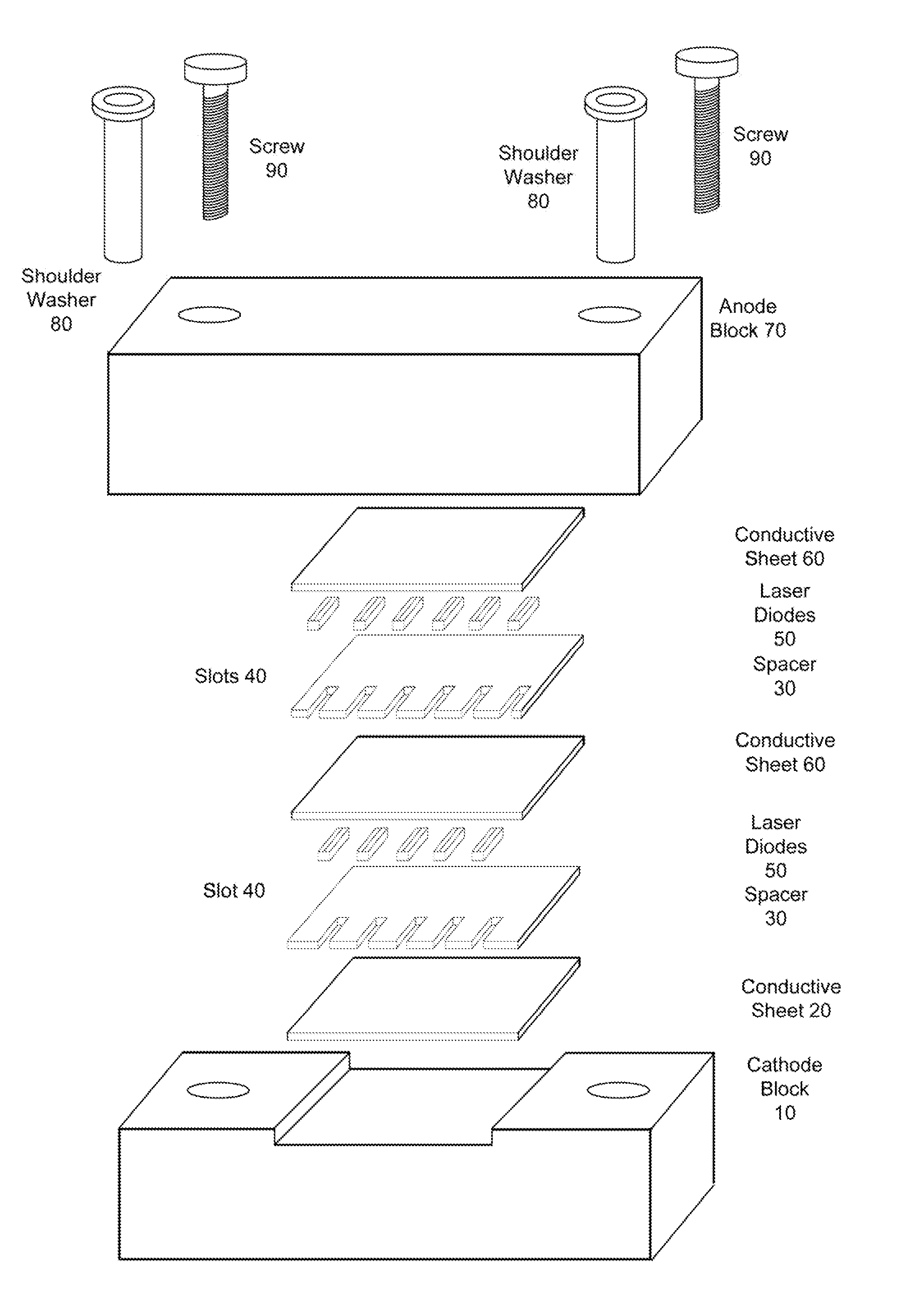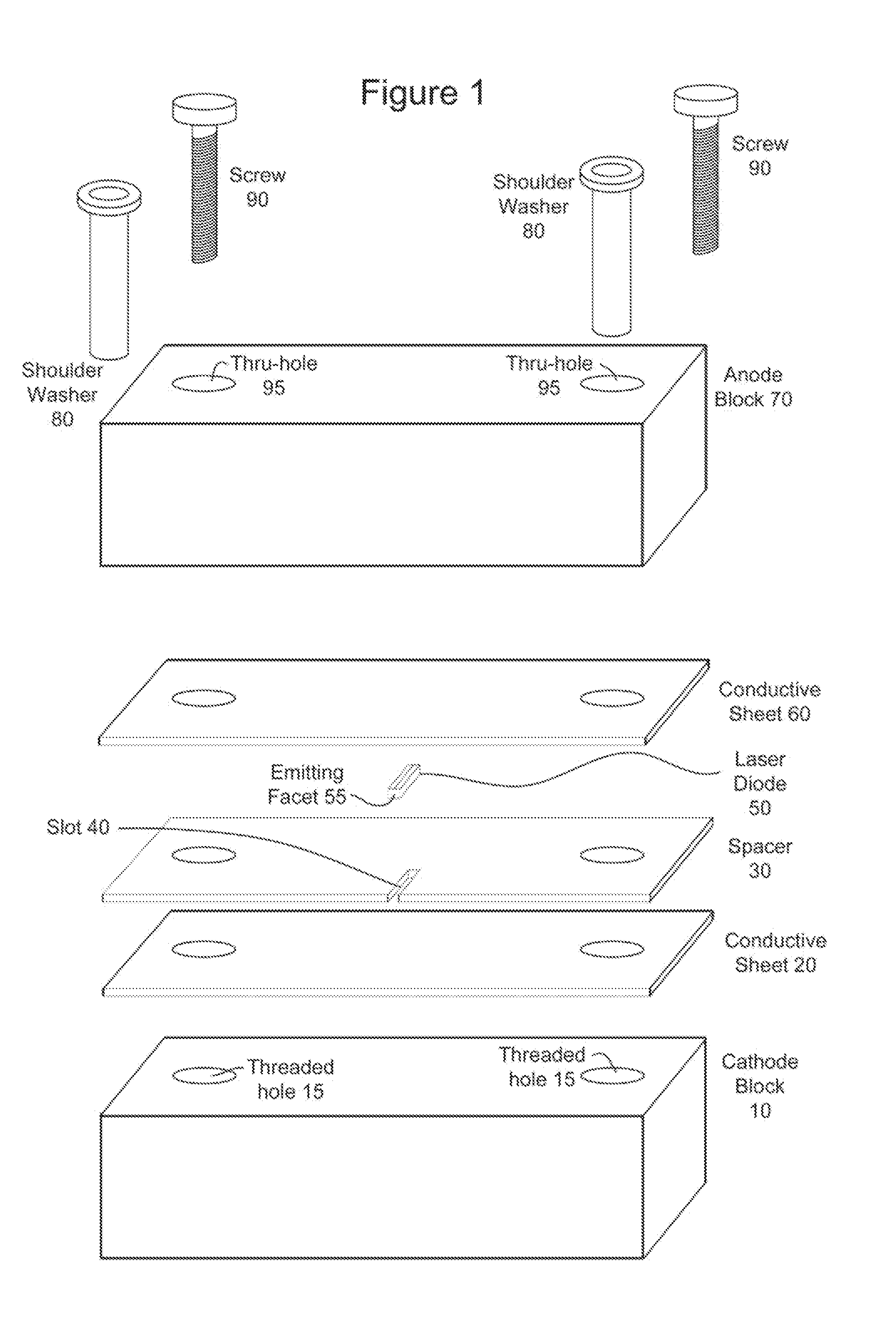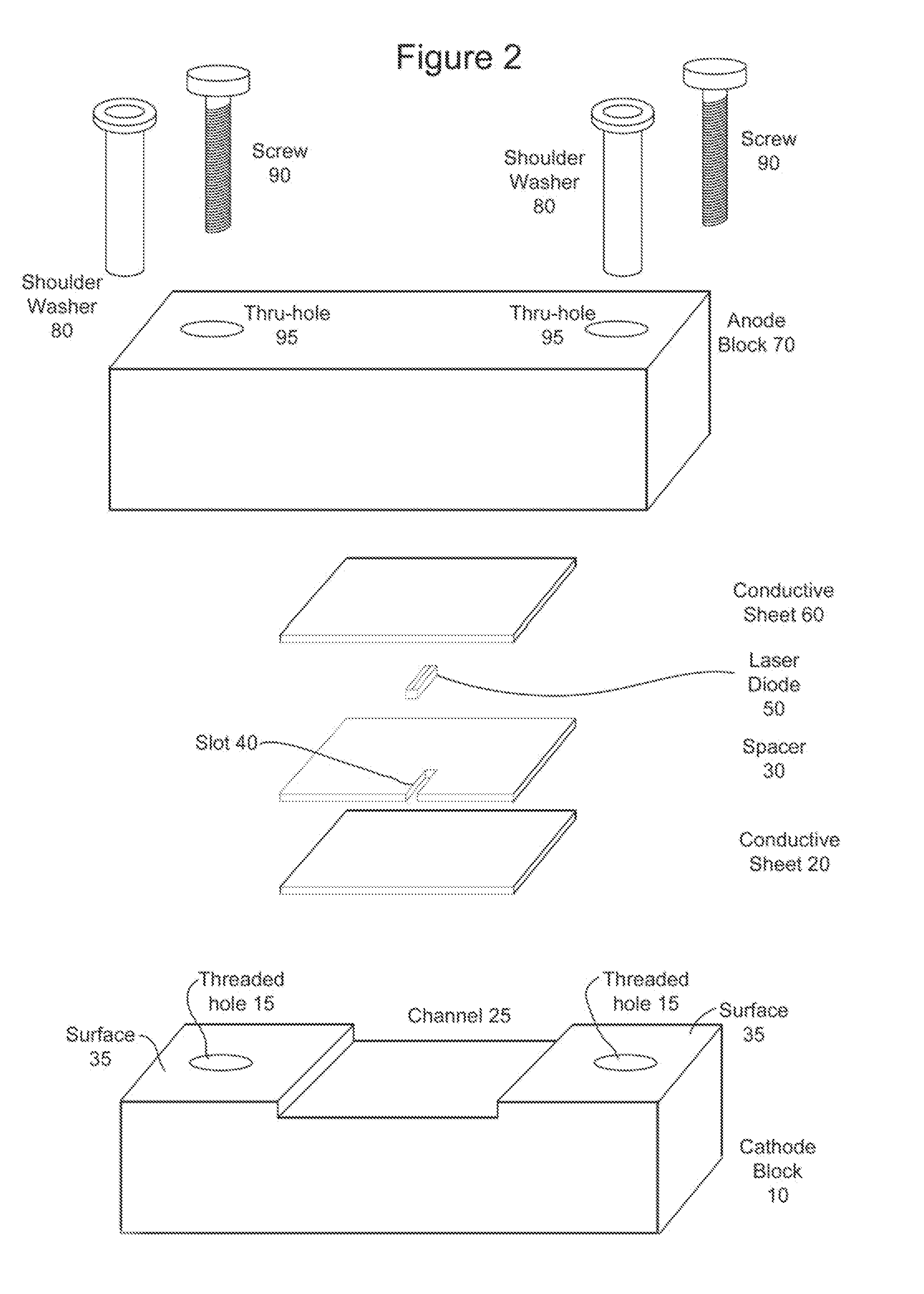Mount for Semiconductor Devices Using Conformable Conductive Layers, and Method
a technology of conformable conductive layers and semiconductor devices, which is applied in the direction of lasers, laser construction details, semiconductor lasers, etc., can solve the problems of brittle laser materials, remarkably small size of led and laser diodes, and mechanical approach that has not proved practical with semiconductor devices such as laser diodes, etc., and achieves excellent heat conduction away and simple manufacturing.
- Summary
- Abstract
- Description
- Claims
- Application Information
AI Technical Summary
Benefits of technology
Problems solved by technology
Method used
Image
Examples
Embodiment Construction
[0022]Referring to FIG. 1, an embodiment of a device in accordance with the invention is shown in an exploded view. In such an embodiment, the device can be of generally rectangular shape, of dimensions nominally 0.5 inch wide by 0.25 inch deep by 0.25 inch in thickness. It will be appreciated that these dimensions and shapes are exemplary only, and are largely a matter of design choice. Thus, the dimensions and shapes shown and described herein are not intended to be limiting. For example, the entire device could be made much smaller by simply utilizing screws smaller than the 0-80 size contemplated in the drawing, or by using glue as discussed in connection with the embodiment of FIG. 4. Similarly, the shape can be altered to any convenient form, as long as sufficient compression is provided to ensure reliable mechanical placement as well as thermal and electrical conductivity among the various components, together with sufficient heat removal.
[0023]In the embodiment shown in FIG....
PUM
 Login to View More
Login to View More Abstract
Description
Claims
Application Information
 Login to View More
Login to View More - R&D
- Intellectual Property
- Life Sciences
- Materials
- Tech Scout
- Unparalleled Data Quality
- Higher Quality Content
- 60% Fewer Hallucinations
Browse by: Latest US Patents, China's latest patents, Technical Efficacy Thesaurus, Application Domain, Technology Topic, Popular Technical Reports.
© 2025 PatSnap. All rights reserved.Legal|Privacy policy|Modern Slavery Act Transparency Statement|Sitemap|About US| Contact US: help@patsnap.com



